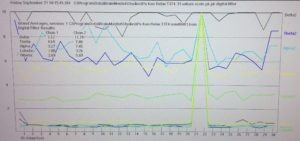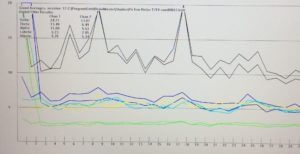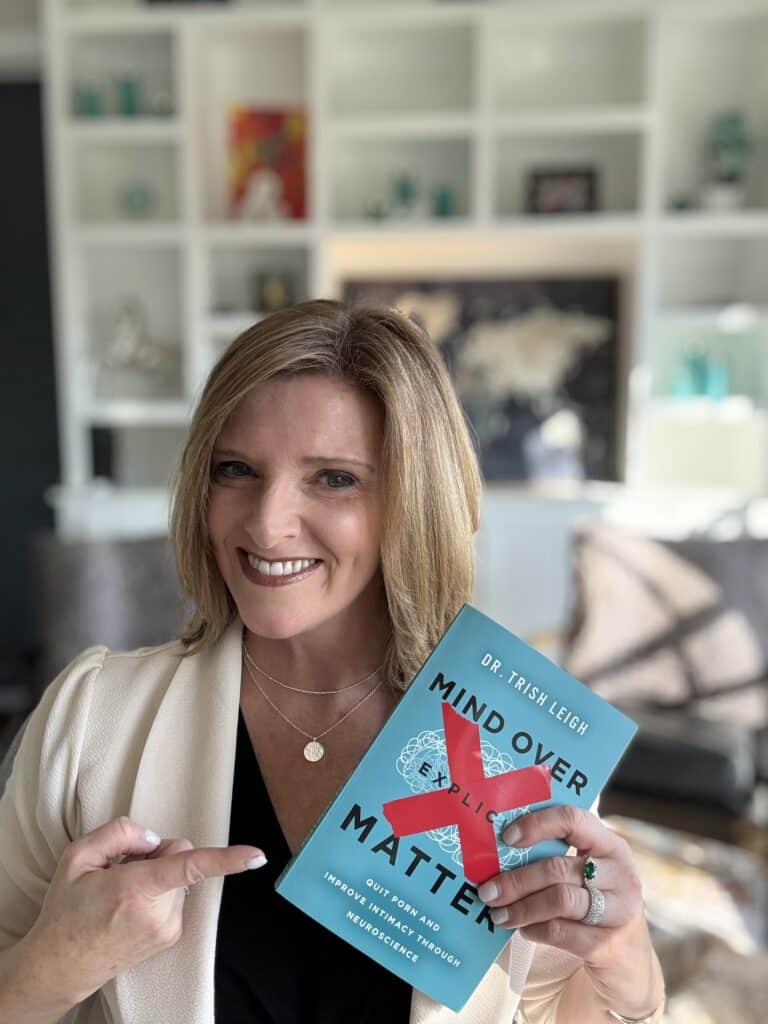After years of working with children, I know that the best Misophonia treatment is Neurofeedback. I usually don’t start right in with this, but for Misophonia it is important. FAmilies suffer and begin to break down quickly due to misophonic responses. The suffering can be stopped. I need people to know this.
How do I know this? Two ways. Having helped lots of families in the office at Leigh Brain & Spine and the science. If you know me, you know I love the science.
Tips for Finding Misophonia Treatment
Misophonia treatment is tricky to find. Obviously, I don’t have to tell you that if you have been looking. Misophonia starts in the brain. It basically is a hiccup in the processing of auditory information and emotional regulation. What we usually see on a qEEG Brain Map is that the person’s brain is running too fast giving them a fight or flight response when they hear auditory information such as chewing, sniffling, and even breathing. This fast brain activity, or hyper-arousal, is seen as too much High Beta, extra fast, brain speed. This typically occurring the frontal lobe of the brain. It can be seen on a qEEG Brain Map.
Make Sure the Practitioner Knows About Misophonia Treatment
Families have said to the hubs, Dr. Cosmas Leigh, and I for years that they are amazed that we know about Misophonia because their primary care doctor didn’tknow what they were talking about. We know! Make sure the person you are thinking about working with knows about it, knows how it comes from the brain, and knows what to train to make the brain work better. THis way you will get better faster and stay that way forever.
How Extra Fast Brain Speed Creates Misophonia
This extra fast speed usually creates heightened sensitivity to the trigger noise. That noise is many times associated with one person. Usually the parent who is closest to the child is the main trigger. I tell parents all the time that as painful as it is, it is a badge of honor. It means you are the person in that child’s world that they are most sensitive to. However, there is an anxiety piece to the brain pattern as well. Here is what the brain pattern of Misophonia involves.
Misophonia Treatment that Measurably Works
My science brain loves to measure progress. These graphs are the screens that Neurofeedback Experts use to gauge progress. Every time a person has a session, whether in the office or at home, the system measures brain performance. Super cool, right? I think so. In these graphs you can see how the yellow line, High Beta, is incredibly high. One of the yellow lines is way above the other, that is how you know it is high in the first graph.

In the second graph, that line has come down drastically. When the yellow decreases, Misophonia goes away. The Neurofeedback system is set to reduce High Beta and increase prefect processing speed in the brain. When the brain is processing sound and emotions in real-time, there are no more glitches that cause Misophonia.

At Leigh Brain & Spine, my awesome team offer Home Neurofeedback especially for Misophonia. They are working with people all across the country. Reducing Misophonia symptoms is our mission. This is how it works. Every time you use the Neurofeedbak system it is teaching your brain to make more “perfect” processing speed int he middle ranges. It also is decreasing the hyper-arousal of the extra fast speed. Over time, with continual use, the new mode becomes you operating mode permanently. It is proven by studies to work this way. If you want to know more about the mechanism behind it read my post on How Neurofeedback Works.
Tips for Coping with Misophonia:
Many times the person will start by trying to cope better and then will move on to reducing the urges they have.
- Ear Plugs / Ear buds with music
- Noise Cancelling Headphones
- Eat away from others / “trigger” person or people
- Background noise in home – music
The last suggestion is my favorite, if you can pull it off. I always have light music in the background of my home when all 7 of us are congregated. It has been shown to put people’s nervous systems at ease and help them get along better. Brilliant, right. I love playing Sinatra-esque music or Italian cooking music unless we are rocking out to Lizzo, of course. The music brings us together while dampening noise made by any one individual. This especially important during meal times. We do the same thing in the car. We have a game that we take turns playing a song out of our own playlists. It is fun and keeps the car ride sane. Misophonia can make both of these situations hard. The music makes both of them better. Trust me, I know.
FOR NEUROFEEDBACK EXPERTS
As part of my Neurofeedback coaching practice I help doctors and practitioners learn how to better serve their clients. The information below will help you serve those looking for Misophonina treatment.
If you are trying to reduce Misophonia for your patients, then you need to check out two articles that shed light on the areas of the brain and the EEG (Electroencephalogram) patterns associated with Misophonia. A recent article in the Journal of Biology shows that Misophonia is grounded in the Anterior Insular Cortex (AIC), that area folded deep within the lateral sulcus separating the temporal lobe from the parietal and frontal lobes of each hemisphere. Check out the article here: https://leighbrainandspine.com/cms/wp-content/uploads/2018/02/Misophonia-Brain-Patterns.pdf.
How the Science Helps Neurofeedback Experts
Why do you need to know this? Because, you want to look for “hot spots” on a person’s qEEG Brain Map. In my mind, I don’t help people with conditions, per se, I help optimize their brain map findings from a neurologically dysregulated pattern, to a more regulated pattern. In the ideal situation, the optimal “perfect” pattern. Of course their history and symptoms are a large part of my decision making process, but my plan of attack is based primarily on their brain ma findings. To locate primary areas of concern, I want to look for hot spots in the main areas based upon what I know about the EEG patterns associated with a condition. This doesn’t mean you always find this pattern, but it is a good place to start looking.
What Happens in the Brain During Misophonia?
The study showed that people who suffer from Misophonia show a heightened response in the AIC that then had a cascading effect of hyperactivity of the brain areas within the network of that area. On fMRI a BOLD (blood-oxygen-level dependent) response within the AIC was found which is a hub in the “salience network” of the brain. This heightened response to the trigger sound then impacted functioning of the prefrontal cortex, the posterior cortex, amygdala, and hippocampus. This brain response creates feelings of hyper-salience of the impacting trigger sound and a reaction that goes along with it.
Back to how to help the person. Based upon the dysregulation pattern of over or underactivity within the brain map, then I decide how I will proceed in regulating brain function. Another study showed that Misophonia is associated with anxiety that impacts the auditory processing areas of the brain and the flight or fight system.
This is congruent with what I have anecdotally found with many people I serve. EEG patterns of excess fast brain processing speed (high Beta) are found in the areas of concern. To regulate these areas, reduction in high beta, fast speed, and an increase in slower, more medium speed (Alpha) is necessary to calm the brain and take the edge off the fight or flight response.
What can you expect as the brain pattern changes and improves? Reduction in symptoms, increase in interpersonal skills and socialization, improved mood, and happier life overall.
#controlyourbrain


